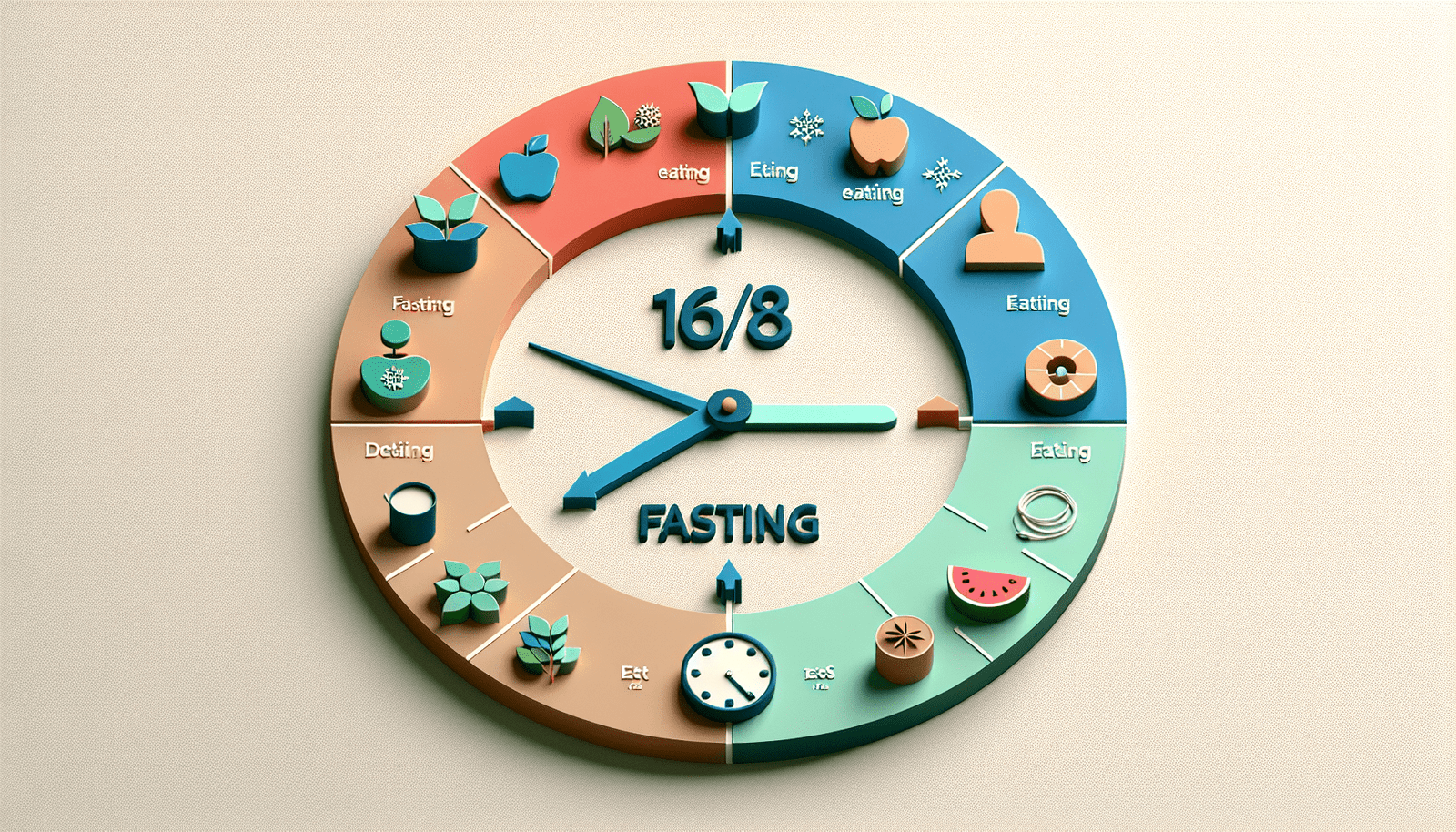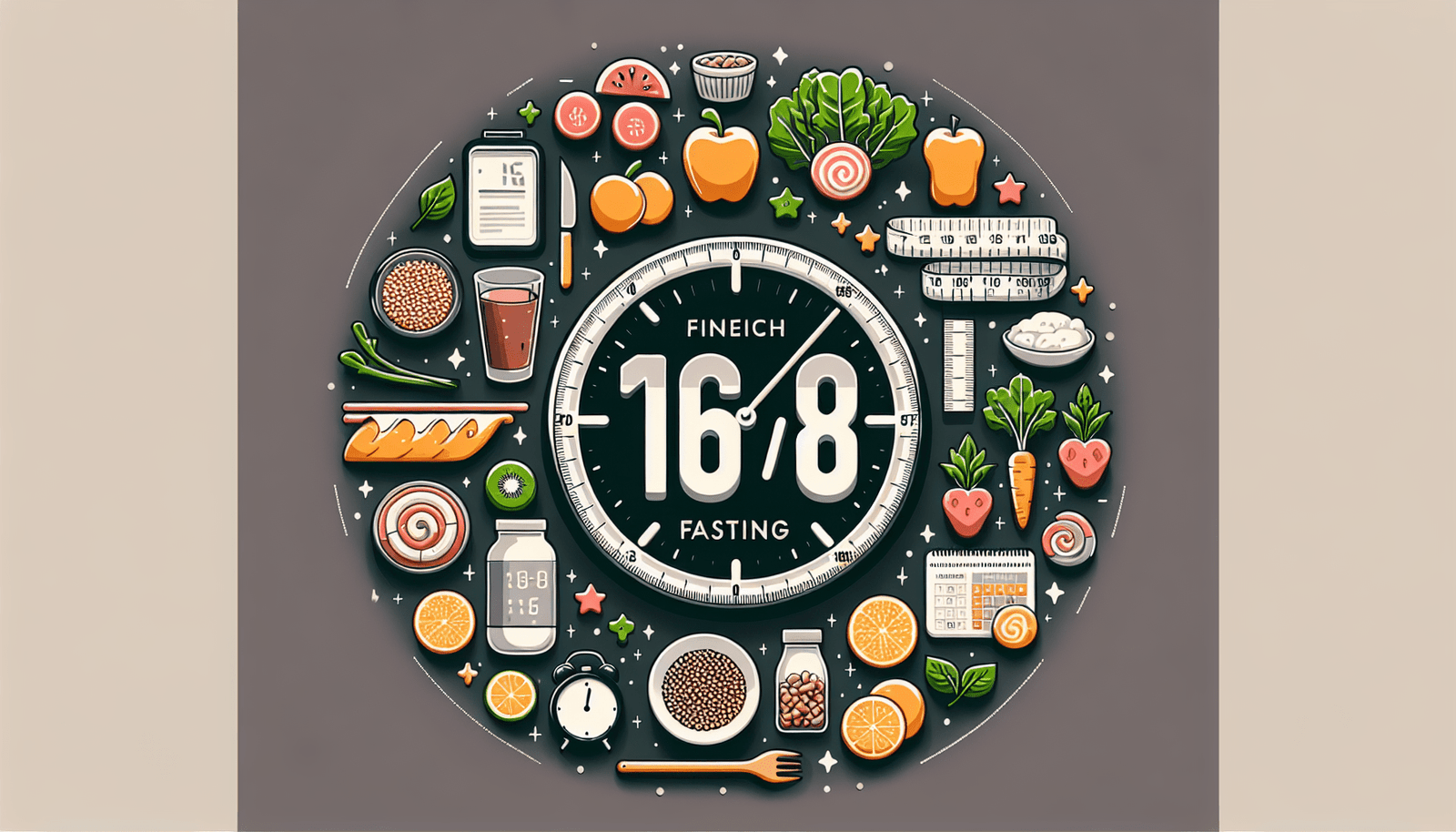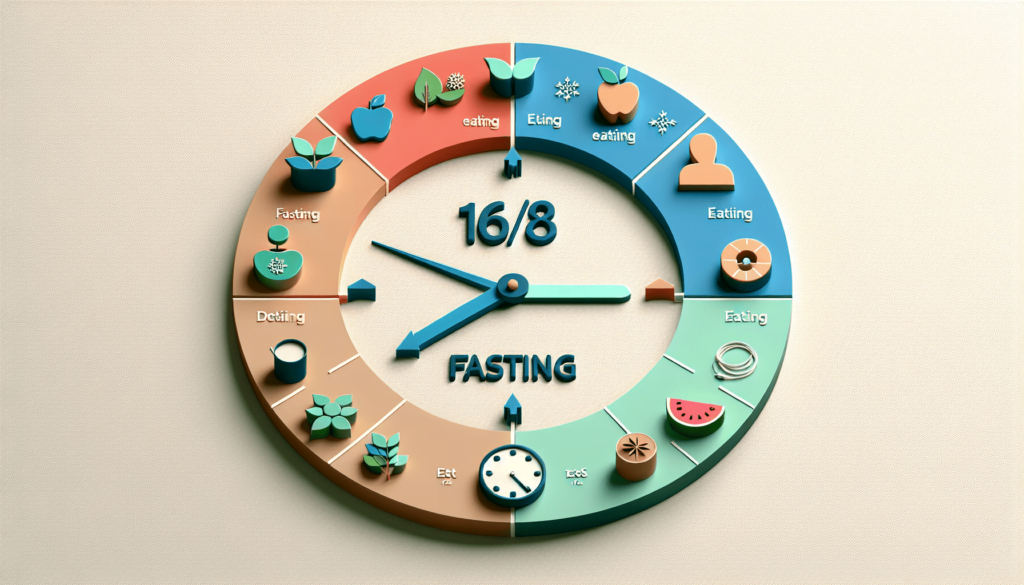So you’ve heard about this fasting method called the 16/8 and you’re curious to know how it works? Well, you’re in the right place! In this step-by-step guide, we’ll break down the 16/8 fasting method, explaining what it is, how to do it, and its potential health benefits. Whether you’re looking to lose weight, improve your metabolic health, or simply experiment with a different eating pattern, the 16/8 fasting method may be just what you’re searching for. So let’s jump right in and discover how this fasting method can be a game-changer for your health and well-being.
What is the 16/8 Fasting Method?
The 16/8 fasting method is a type of time-restricted eating pattern that involves fasting for 16 hours and consuming all meals within an 8-hour window. This method has gained popularity among individuals looking to improve their health and lose weight. It is a simple and flexible approach that allows you to reap numerous benefits without strict calorie counting or deprivation.
Explanation of the 16/8 fasting schedule
The 16/8 fasting schedule entails abstaining from food for 16 consecutive hours and condensing your meals into an 8-hour eating window. For example, if you choose to start your eating window at 11 am, you would consume your meals and snacks between 11 am and 7 pm. The remaining 16 hours, including sleep time, would be dedicated to fasting. This fasting period helps your body burn stored fat for energy as it depletes the glycogen stores.
How it differs from other fasting methods
The 16/8 fasting method is one of the most popular variations of intermittent fasting, differing from other methods like alternate-day fasting or the 5:2 diet. Unlike those methods, the 16/8 fasting method allows for daily eating within a specific time frame, making it easier to adhere to long-term. This flexibility and consistency make it a great option for individuals who struggle with strict dietary regimens. The consecutive 16-hour fasting period also promotes more significant fat-burning benefits compared to shorter fasting windows.
Benefits of the 16/8 Fasting Method
Weight loss
One of the primary benefits of the 16/8 fasting method is weight loss. By restricting your eating window, you naturally consume fewer calories, leading to a calorie deficit and subsequent weight loss. In addition, fasting helps activate your body’s fat-burning mechanisms as it utilizes stored fat for energy during the fasting period. Studies have shown that time-restricted eating methods like the 16/8 fasting method can aid in reducing body weight, waist circumference, and body fat percentage.
Improved blood sugar control
The 16/8 fasting method can also help improve blood sugar control. With fewer meals and an extended fasting period, your body is given more time to process and metabolize glucose effectively. This can lead to enhanced insulin sensitivity and lower blood sugar levels. Research has shown that intermittent fasting methods, including the 16/8 fasting method, can improve blood sugar control and reduce the risk of developing conditions like insulin resistance and type 2 diabetes.
Increased productivity
Another advantage of the 16/8 fasting method is increased productivity. By having a set eating window, you eliminate the constant distraction of snacking or planning meals throughout the day. This can help improve focus and concentration, allowing you to be more productive in your work or daily activities. With fewer interruptions from food-related tasks, you can allocate your time and energy to tasks that matter most to you.
Enhanced mental clarity
Fasting has been found to have cognitive benefits, and the 16/8 fasting method is no exception. As your body enters a state of ketosis during the fasting period, it relies on ketones as an alternative energy source. Ketones have been shown to have neuroprotective properties and may enhance brain function. Many individuals who practice the 16/8 fasting method report improved mental clarity, increased alertness, and heightened focus.

Step 1: Set Your Eating Window
Determining the ideal fasting period
The first step in following the 16/8 fasting method is to determine your ideal eating window. Consider your lifestyle, daily schedule, and personal preferences when deciding on the hours during which you will consume your meals. It is recommended to choose a consistent and convenient time frame that aligns with your daily routine to ensure adherence.
Selecting a convenient time frame
When selecting your eating window, it’s important to choose a time frame that suits your lifestyle. If you prefer to have breakfast and an early dinner, you may opt for a morning to early evening eating window, such as 8 am to 4 pm. Alternatively, if you prefer to skip breakfast and have a later lunch and dinner, you could choose a later eating window, such as 12 pm to 8 pm. It’s essential to find a schedule that works for you and allows you to comfortably fit in all your meals.
Step 2: Gradually Adjust Your Meal Times
Slowly shifting meal times to fit the fasting schedule
Once you have determined your eating window, it’s important to gradually adjust your meal times to align with the 16/8 fasting schedule. If you currently have breakfast at 7 am but plan to start your eating window at 11 am, start by pushing back your breakfast by 30 minutes each day until you reach your desired mealtime. This gradual adjustment helps your body adapt to the new eating schedule without causing discomfort or hunger pangs.

Step 3: Optimize Your Nutrition during Eating Window
Choosing nutrient-dense foods
During your eating window, it’s important to focus on consuming nutrient-dense foods to support your overall health and well-being. Incorporate plenty of fruits, vegetables, lean proteins, whole grains, and healthy fats into your meals. These foods provide essential vitamins, minerals, fiber, and antioxidants to nourish your body.
Balancing macronutrients
In addition to eating nutrient-dense foods, it’s essential to balance your macronutrients, including carbohydrates, proteins, and fats. Aim for a well-rounded meal that includes a combination of all three macronutrients to provide sustained energy and promote satiety. For example, a balanced meal could consist of grilled chicken breast (protein), steamed vegetables (carbohydrates and fiber), and a drizzle of olive oil (healthy fat).
Avoiding excessive calorie intake
While the 16/8 fasting method does not restrict specific foods or impose strict calorie limits, it’s important to avoid excessive calorie consumption during your eating window. Fasting is not a license to overeat or indulge in unhealthy foods. Practice mindful eating, listen to your body’s hunger and fullness cues, and choose portion sizes that support your weight loss or maintenance goals.
Step 4: Stay Hydrated throughout the Fasting Period
Importance of water intake
Staying hydrated is crucial, especially during the fasting period. Drinking an adequate amount of water helps support various bodily functions and can help curb hunger pangs. Aim to drink at least 8 cups (64 ounces) of water per day, or more if necessary. Drinking water can also help prevent dehydration and promote healthy digestion.
Alternative beverages during fasting
While water is the best choice for hydration, you can also enjoy other non-caloric beverages during the fasting period. Herbal tea, black coffee, and unsweetened tea are all acceptable options. However, be cautious with sweetened beverages or those containing additives, as they may break your fast and disrupt the metabolic benefits of fasting.
Step 5: Engage in Moderate Exercise
Benefits of exercising during fasting
Incorporating moderate exercise into your routine while following the 16/8 fasting method can offer additional benefits. Exercising during the fasting period can help maximize fat burning and support weight loss efforts. It is thought that fasting enhances your body’s ability to burn stored fat as fuel, and exercising during this time can further amplify these effects. Additionally, exercise has numerous other benefits, including improved cardiovascular health, increased muscle strength, and elevated mood.
Recommended workout routines
When exercising during the fasting period, it’s important to choose activities that are appropriate for your fitness level and preferences. Opt for moderate-intensity exercises such as brisk walking, jogging, cycling, or strength training. These activities can help elevate your heart rate and burn calories without placing excessive stress on your body. Remember to listen to your body and adjust the intensity and duration of your workouts as needed.
Step 6: Listen to Your Body
Recognizing hunger cues and satiety
Listening to your body’s hunger cues and recognizing satiety is crucial when practicing the 16/8 fasting method. Pay attention to your body’s signs of hunger, such as stomach growling or feelings of emptiness, but also be mindful of emotional or boredom-driven hunger. Similarly, be aware of feelings of fullness and stop eating when you are comfortably satisfied, rather than overly full.
Adjusting fasting duration if needed
The 16/8 fasting method is highly customizable, and it may be necessary to adjust the fasting duration to suit your individual needs. If you find it challenging to go 16 hours without eating, consider starting with a slightly shorter fasting window, such as 14 hours, and gradually increasing it as your body adapts. It’s important to find a fasting duration that feels sustainable and comfortable for you to maintain in the long term.
Step 7: Maintain Consistency and Patience
Importance of sticking to the routine
Consistency is key when practicing the 16/8 fasting method. It’s important to stick to your chosen eating window and fasting period to reap the full benefits. Skipping meals or prolonging the fasting period irregularly may disrupt your body’s metabolic rhythm and make it harder to adapt to this eating pattern. Be mindful of potential social or scheduling challenges and plan ahead to ensure you can adhere to the routine.
Understanding the time needed for adjustment
While some individuals may adapt quickly to the 16/8 fasting method, others may require more time to adjust. Understand that your body may need a few weeks to adapt to the new eating schedule and metabolic changes. It’s normal to experience hunger or cravings initially, but these will likely diminish over time. Be patient and allow your body to adjust at its own pace.
Common FAQs about the 16/8 Fasting Method
Can I consume any calories during the fasting period?
No, the 16/8 fasting method requires abstaining from all calorie intake during the fasting period. Consuming even small amounts of calories can disrupt the fasting state and diminish the metabolic benefits. Stick to zero-calorie beverages like water, unsweetened tea, or black coffee during the fasting period.
Can I change my eating window on different days?
While consistency is encouraged for optimal results, it is possible to adjust your eating window on different days to accommodate social events or personal preferences. However, try to maintain a consistent fasting period for the majority of the week to ensure the most significant benefits.
How long does it take to see results?
The timeline for seeing results with the 16/8 fasting method may vary from person to person. Some individuals may notice weight loss and improved blood sugar control within a few weeks, while others may take longer. Consistency and adherence to the fasting schedule, as well as overall lifestyle factors, will affect the speed of results.
Can I drink coffee or tea while fasting?
Yes, black coffee and herbal tea are acceptable to consume during the fasting period. However, be cautious with adding sugar, cream, or any significant calorie-containing additives, as they may break the fast. Stick to unsweetened options to ensure the fasting benefits are not compromised.
By following this comprehensive 16/8 fasting method guide, you can effectively implement this time-restricted eating pattern into your lifestyle. Remember to listen to your body, maintain consistency, and be patient with the process. With time, you can experience the numerous benefits of the 16/8 fasting method, including weight loss, improved blood sugar control, increased productivity, and enhanced mental clarity.








